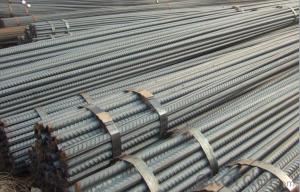Welcome to the world of rearing in concrete! If you’re new to this concept, you might be wondering what it’s all about. Essentially, rearing in concrete is the process of raising animals, typically livestock, in a concrete environment. This method is becoming increasingly popular due to its numerous benefits, including better control over the animals’ living conditions, improved hygiene, and reduced disease transmission. But don’t worry, we’re not here to lecture you on the science behind it. Instead, we’re going to take a fun, step-by-step journey through the process, complete with tips, tricks, and personal anecdotes to make it as engaging as possible.
Why Choose Concrete?
Before we dive into the steps, let’s talk about why concrete is such a popular choice for rearing animals. It’s not just about aesthetics or modernity; there are practical reasons too. Concrete is durable, easy to clean, and provides a stable surface for the animals. It also helps in maintaining a consistent temperature, which is crucial for their health and comfort. Plus, it can be designed in various ways to suit the specific needs of different species.
Step 1: Planning Your Concrete Rearing Space
The first step in rearing in concrete is planning. This involves deciding on the type of animals you want to rear, the number of animals, and the size of the space you’ll need. Consider factors like their growth, the space they require for movement, and their social behavior. It’s also important to think about the layout of the facility, including access for feeding, cleaning, and veterinary care.
Step 2: Designing the Concrete Structure
Once you have a plan, it’s time to design the concrete structure. This includes the walls, floors, and any additional features like ramps or platforms. You’ll want to ensure that the structure is strong and safe, with proper drainage to prevent the buildup of moisture, which can lead to health issues. Don’t forget to incorporate elements that promote the animals’ well-being, such as resting areas and space for natural behaviors.
Step 3: Choosing the Right Materials
Selecting the right materials is crucial for the success of your rearing project. High-quality concrete is a must, but you’ll also need to consider other materials for things like fencing, gates, and feeding systems. It’s worth investing in durable, low-maintenance materials to save time and effort in the long run.
Step 4: Construction
Now for the exciting part – construction! This is where you bring your design to life. Work with experienced professionals who understand the specific requirements of rearing animals in concrete. They’ll help you ensure that the structure is built to last and meets all the necessary standards for animal welfare.
Step 5: Preparing the Environment
Before you bring your animals into their new home, you’ll need to prepare the environment. This includes cleaning and disinfecting the space, setting up feeding and watering systems, and creating a comfortable temperature. You might also want to introduce some natural elements, like plants or rocks, to make the space feel more inviting.
Step 6: Introducing the Animals
Finally, it’s time to introduce your animals to their new concrete home. Do this gradually and carefully to minimize stress. Monitor their behavior closely to ensure they’re adjusting well and address any issues that arise promptly.
Maintaining a Concrete Rearing Environment
Once your animals are settled in, the hard work isn’t over. You’ll need to maintain the concrete environment to keep it clean, safe, and comfortable for the animals. This includes regular cleaning, inspections for damage, and making any necessary repairs or adjustments.
The Benefits of Rearing in Concrete
As you embark on this journey, remember the benefits that rearing in concrete offers. From improved animal health to easier management, it’s a choice that can make a significant difference in the lives of your livestock. And who knows, you might even find that your concrete rearing setup becomes a source of pride and enjoyment.
Conclusion
Rearing in concrete might seem like a daunting task at first, but with the right approach, it can be a rewarding and efficient way to raise your animals. By following these steps and keeping the animals’ needs at the forefront, you’ll be well on your way to creating a successful and thriving rearing environment. So, roll up your sleeves, and let’s get started!

